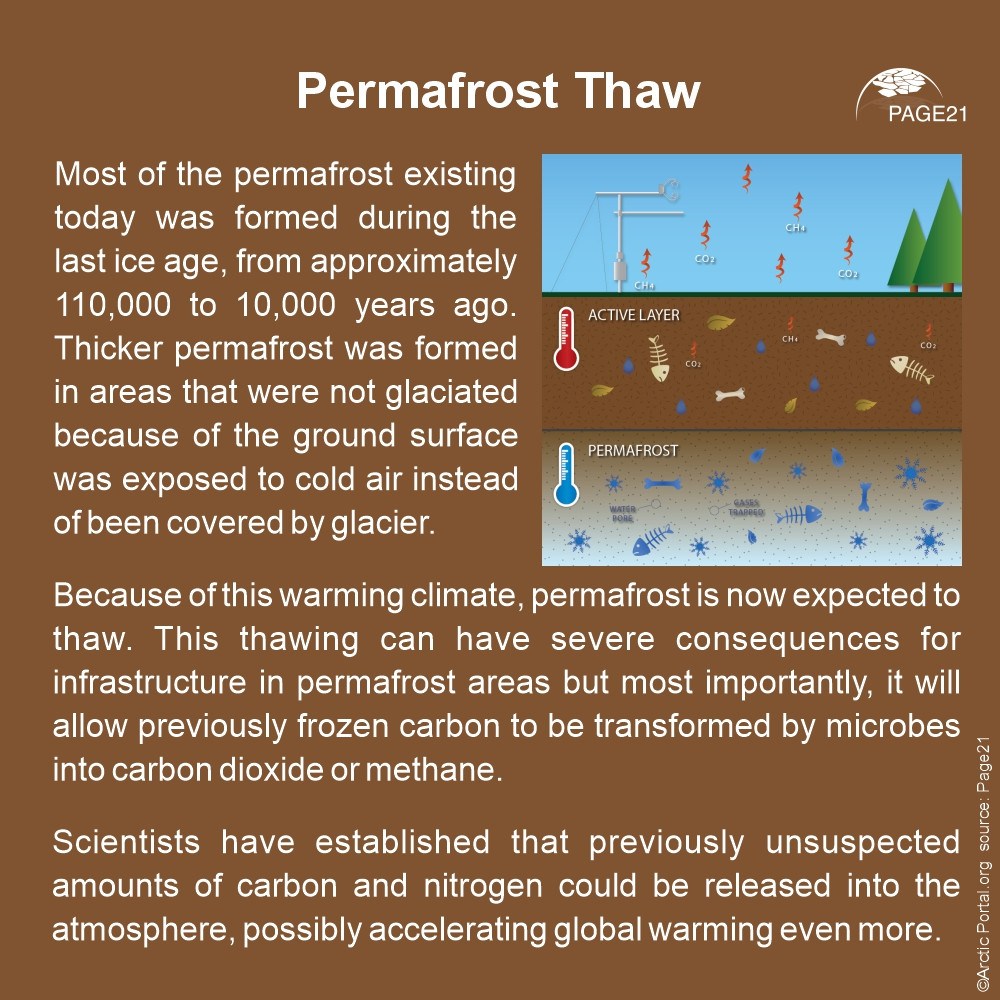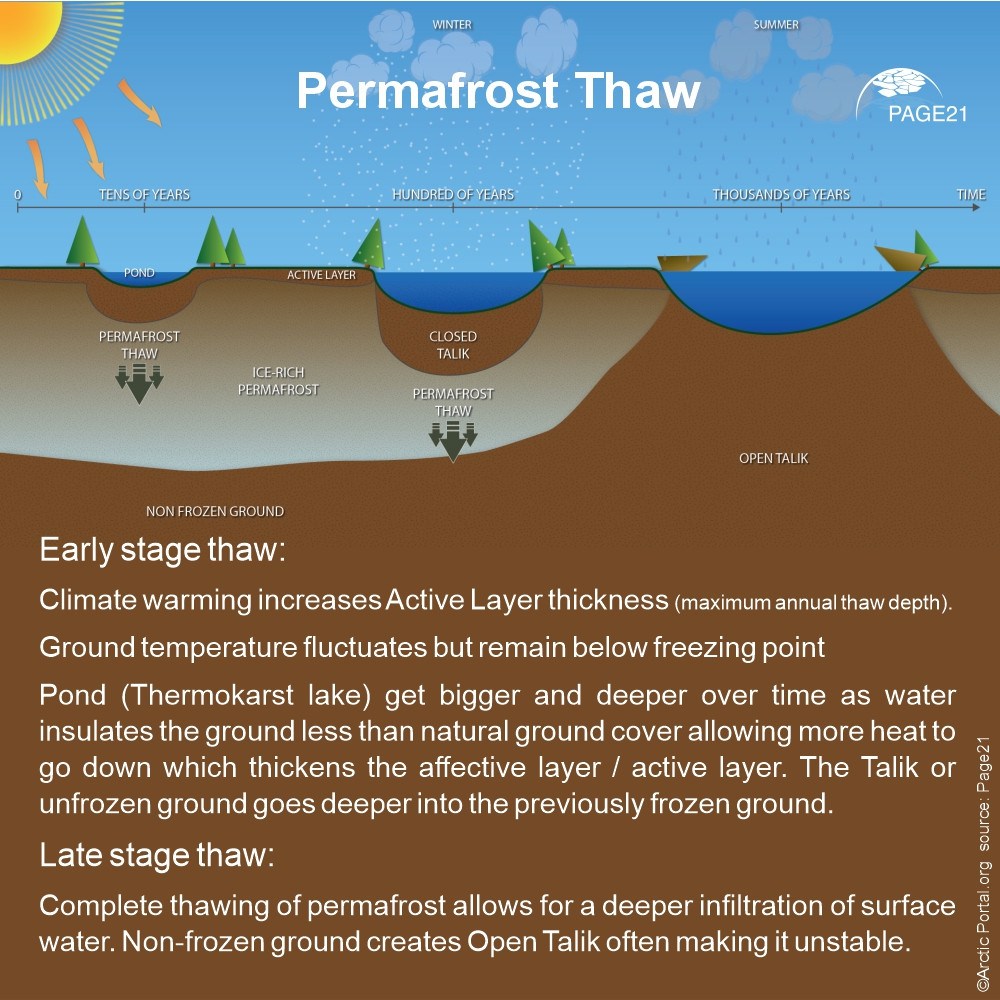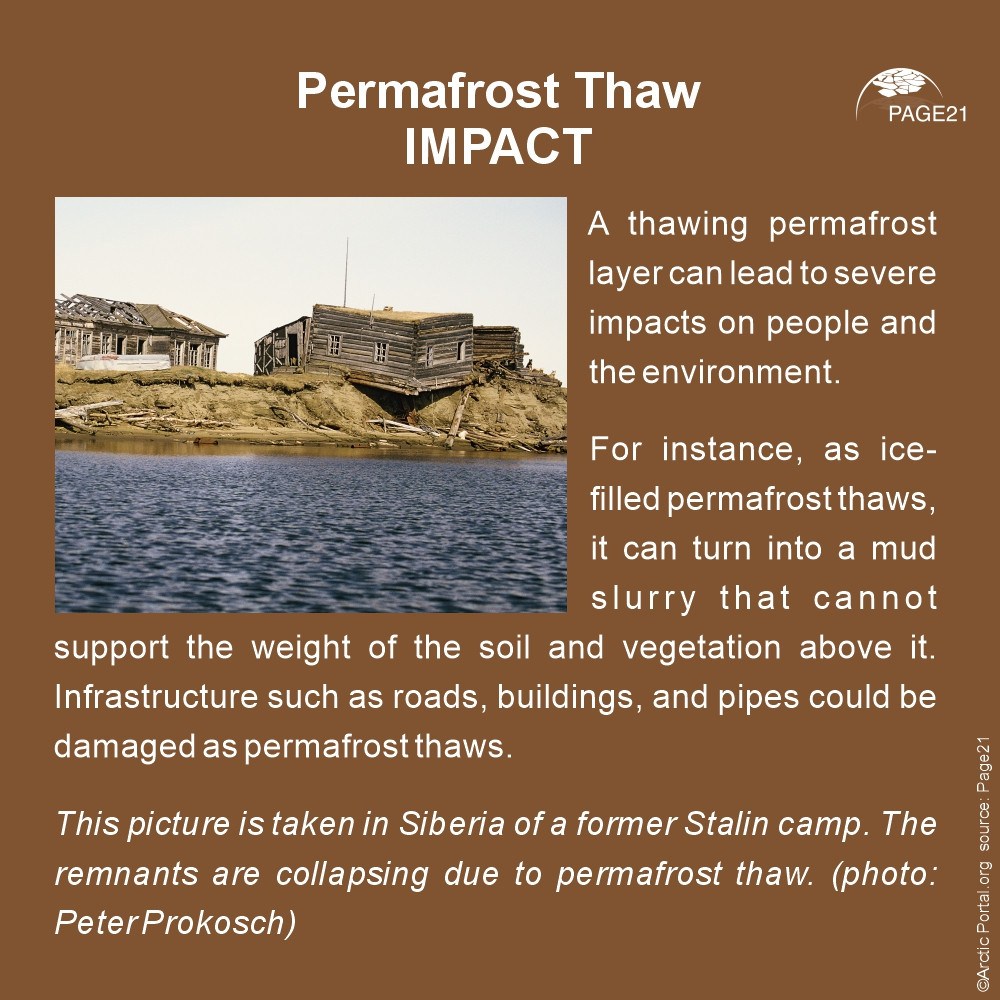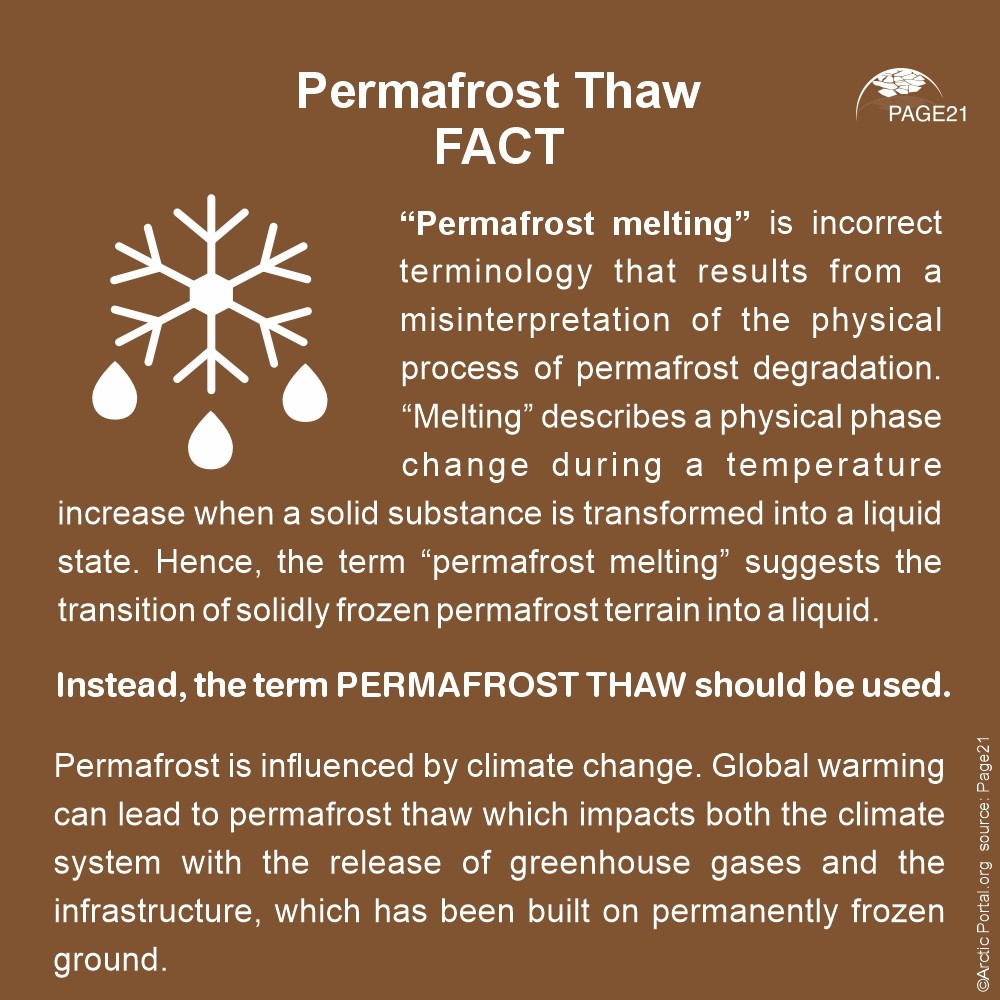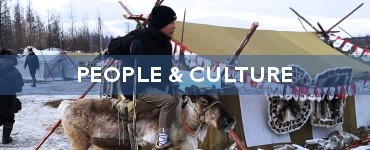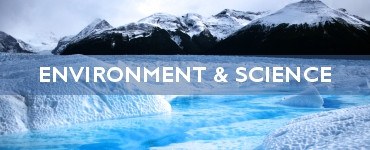Most of the permafrost existing today was formed during the last ice age, from approximately 110,000 to 10,000 years ago. Thicker permafrost was formed in areas that were not glaciated because of the ground surface was exposed to cold air instead of been covered by glacier.
Most of the permafrost existing today was formed during the last ice age, from approximately 110,000 to 10,000 years ago. Thicker permafrost was formed in areas that were not glaciated because of the ground surface was exposed to cold air instead of been covered by glacier.
Because of this warming climate, permafrost is now expected to thaw. This thawing can have severe consequences for infrastructure in permafrost areas but most importantly, it will allow previously frozen carbon to be transformed by microbes into carbon dioxide or methane.
Scientists have established that previously unsuspected amounts of carbon and nitrogen could be released into the atmosphere, possibly accelerating global warming even more.
Early stage thaw
Climate warming increases Active Layer thickness (maximum annual thaw depth).
Ground temperature fluctuates but remain below freezing point.
Pond (Thermokarst lake) get bigger and deeper over time as water insulates the ground less than natural ground cover allowing more heat to go down which thickens the affective layer / active layer. The Talik or Unfrozen ground goes deeper into the previously frozen ground.
Late stage thaw
Complete thawing of permafrost allows for a deeper infiltration of surface water. Non-frozen ground creates Open Talik often making it unstable.
Impact
A thawing permafrost layer can lead to severe impacts on people and the environment.
Fore instance, as ice-filled permafrost thaws, it can turn into a mud slurry that cannot support the weight of the soil and vegetation above it. Infrastructure such as roads, buildings, and pipes could be damaged as permafrost thaws.
FACT
"Permafrost melting" is incorrect teminology that results from a misinterpretation of the physical process of permafrost degration. "Melting" describes a physical phase change during a temperature increase when a solid substance is transformed into a liquid state. Hence, the term "permafrost melting" suggests the transition of solidly frozen permafrost terrain into a liquid.
Instead, the term PERMAFROST THAW should be used.
Permafrost is influenced by climate change. Global warming can lead to permafrost thaw which impacts both the climate system with the release of greenhouse gases and the infrastructure, which has been build on permanently frozen ground.
Visit our Map Gallery Arctic Portal specializes in creating customized graphical maps that cover a range of significant Arctic topics with global recognition. We are continuously working on new maps and adding them to our Gallery.

